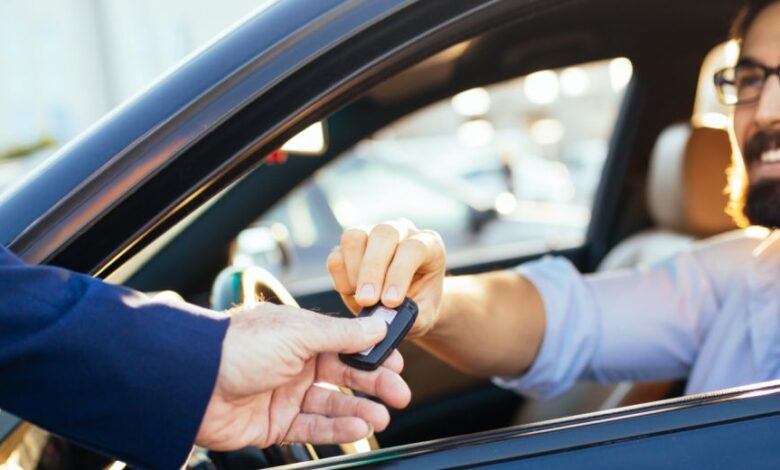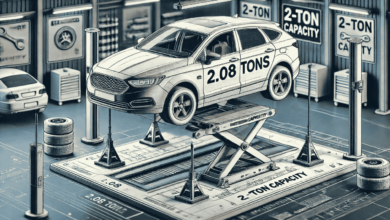5 Car Buying Checklist: How to Work with the Right Car Dealer

Buying a car is one of the most significant financial decisions you’ll make, and the process can be both exciting and overwhelming. With so many options, features, and financing plans available, working with the right dealership is crucial to ensure a smooth and stress-free purchase. Whether you’re looking for a new or used vehicle, choosing a trusted dealer can make all the difference in terms of transparency, pricing, and after-sales service. For buyers in Alabama, finding reputable car dealers Mobile, AL is an excellent way to start the journey toward owning your next vehicle. This guide presents a five-step car buying checklist designed to help you work with the right dealer and secure the best deal possible.
Step 1: Research Dealerships Before Visiting
The first step in working with the right car dealer is to conduct thorough research before setting foot on the lot. A reliable dealership will have positive reviews, a professional website, and a history of serving the local community. Consider the following tips when researching:
- Read Customer Reviews: Look for feedback on platforms like Google, Yelp, or automotive forums to see what past customers experienced.
- Check Dealer Ratings: Many automotive websites rate dealerships based on customer satisfaction and sales practices.
- Evaluate Dealer Inventory: Make sure the dealership offers a wide range of vehicles, including the models and trims you’re interested in.
- Look for Specialization: Some dealerships specialize in certain brands, which often means better expertise in service and vehicle knowledge.
Doing your homework ensures you’re not walking into a dealership unprepared, and it increases your chances of finding a trustworthy partner in the car-buying process.
Step 2: Understand Your Budget and Financing Options
Before engaging with a car dealer, it’s important to know your budget. Walking in without a clear financial plan makes it easier to get swayed into deals that don’t work for your long-term financial goals. Here’s how to prepare:
- Determine Your Budget Range: Calculate how much you can afford for a monthly payment and overall car cost.
- Review Your Credit Score: A higher score often means better financing rates.
- Pre-Approved Financing: Getting pre-approval from a bank or credit union gives you a solid baseline to compare against dealer financing offers.
- Factor in Additional Costs: Don’t forget taxes, registration fees, insurance, and long-term maintenance.
A reputable dealer will work with you to explore financing options that fit your budget without pushing you into unnecessary add-ons or unfavorable loan terms.
Step 3: Ask the Right Questions at the Dealership
When you visit a dealership, your interaction with the sales staff can tell you a lot about whether it’s the right place to buy. Asking the right questions will help you gauge the dealer’s transparency and commitment to customer satisfaction. Some key questions include:
- What warranties are included with the vehicle?
- Can I see the vehicle history report for used cars?
- What are the dealership fees, and are they negotiable?
- Are there any current promotions or incentives?
- Can I take the vehicle for an extended test drive?
A reliable dealer will answer these questions honestly and provide documentation when necessary. If you feel pressured or your questions are brushed off, it may be a red flag that this isn’t the right dealership for you.
Step 4: Inspect the Vehicle and Take a Test Drive
The vehicle itself is the heart of your purchase, so never skip the inspection and test drive stage. A good dealership will encourage you to take your time to ensure the car meets your expectations. Here’s what to focus on:
- Exterior Condition: Check for scratches, dents, or mismatched paint.
- Interior Comfort: Inspect upholstery, seating, and controls for wear or defects.
- Technology and Features: Test the infotainment system, climate control, and safety features.
- Under the Hood: Look for leaks, rust, or other warning signs in the engine bay.
- Test Drive Performance: Evaluate how the car accelerates, brakes, handles turns, and deals with bumps.
If you’re buying a used car, consider having it inspected by an independent mechanic. A trustworthy dealer won’t object to an outside inspection, and it’s a good sign that they stand by their vehicles.
Step 5: Review the Deal Carefully Before Signing
The final step is perhaps the most crucial: reviewing the sales contract and financing agreement before signing. It’s easy to get caught up in the excitement of buying a new car, but taking time to review ensures you won’t face unpleasant surprises later. Pay attention to:
- Price Breakdown: Make sure the agreed-upon price matches what’s listed in the contract.
- Dealer Fees: Some fees are legitimate (like registration), but watch out for excessive or hidden charges.
- Warranty Coverage: Confirm what’s included in the standard warranty and ask about optional extended warranties.
- Financing Terms: Double-check the interest rate, loan term, and monthly payment amount.
- Return Policy or Guarantees: Some dealers offer short-term return policies or satisfaction guarantees—ask if these apply.
Working with a transparent dealer means you’ll never feel rushed or pressured into signing. They’ll encourage you to review every detail, answer your questions, and give you the confidence that you’re making the right decision.
Conclusion
Buying a car is more than just choosing the right make and model—it’s about working with a dealership that values honesty, customer satisfaction, and long-term service. By following this five-step car buying checklist, you’ll be better prepared to research dealerships, understand your budget, ask the right questions, inspect your vehicle thoroughly, and review the deal carefully before signing.




